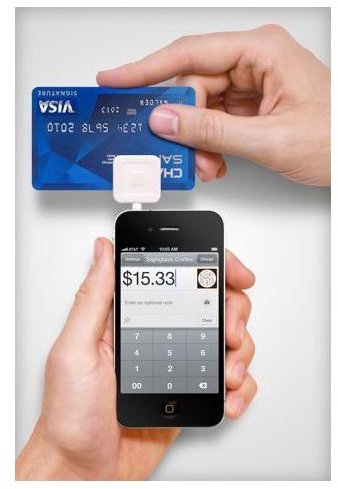Mobile Phone Payment Technologies and Their Un-Popularity in the US
Acceptance of Mobile Payment Technologies
In the United States, the unofficial home of consumer commerce, mobile payment technology is lagging behind in acceptance by the
population. There are many reasons why mobile phone payment systems are not widely used in the US. The reasons are complex and have more to do with the mobile payment systems themselves rather than with the consumers. Two mobile payment system flaws stand out as the major challenges to deploying mobile commerce or ”m-commerce” systems including security and standardization.
Elsewhere in the world, people use their mobile phones to process casual consumer transactions. In some cases, it is even possible to transfer funds from one cellphone to another; for example, using the Square. The Square is just that; a little square that attaches to a mobile phone and allows users to swipe credit cards to make or receive payments. Combined with the application users must download, this makes for a convenient little mobile payment system. However, this seems to be the only mobile payment system available to date, except for those that can take photos of checks for deposit into the user’s bank account.
Mobile Payment Security
Mobile communications have spread like wildfire over the last 10 years. The number of cellphones in operation now exceeds the number of traditional landline telephones. A growing number of households do not have traditional phone service and rely solely on mobile phones for all their communications. Because of this, security is the single most vexing problem facing manufacturers and cell phone service providers.
Prior to the extensive deployment of mobile Internet access, the major security risk was cloning cell phones. Using advanced scanning technology, criminals would intercept cell phone signals to copy the cell phone ID codes and make calls while another phone owner would foot the bill. Worse yet, this information could be used to eavesdrop on users; however, technology has advanced to the point where this is less of a threat than it was.
Unfortunately, the success of smartphones and Internet-enabled cellphones has opened up millions of cell phone users to risk and resulted in malware gaining access to the phones in addition to other threats. Mobile malware is a growing security problem and many security software providers are racing to produce protection against this threat. The consensus is that the risks are still too great to deploy “m-commerce” systems until the threat is “under control.”
Mobile Payment Standardization
If there is to be a secure, reliable “m-commerce” system, the mobile phone payment technology that drives it will have to be standardized

across all mobile and merchant platforms to make it work. For example, many e-commerce systems are in existence now; the underlying technology and its use is standardized enough to allow consumers to use the systems without having to worry about whether their service is compatible with the merchants’ payment systems. Because of the outcry of public popularity and need for the system, the manufacturers made sure they exist and can be used across all platforms.
With so many companies struggling for control of the smartphones industry, the challenges of standardization when it comes to mobile phone payment technologies are even greater. Google may release a mobile commerce system, but will it work with Apple iPhones? Will the Google mobile payment system work with the merchants that install only an iPhone based payment system? No, probably not.
However, the Square has finally taken the first step. It not only has an app for both Android OS and iOS smartphones, but it also has a specific piece of hardware that fits most consumers’ phones as well.
Unanswered Questions
What about RIM and other mobile phone platforms? Data exchange over smartphones is secure enough for email and web surfing, but it is still not secure enough for most people to access their various bank accounts and other places where money is accessed, with limited exceptions. What encryption system will be used? With so many cellphones on the market what about the hardware? Will your supermarket’s payment system be compatible with your cellphone? These questions are at the forefront of the mobile phone payment technology industry and they are questions that must be answered before a mobile payment system can be deployed by any merchant or smartphone manufacturer.
While these questions are still unanswered, many companies are working on them. Firms such as PayPal, Google, credit card processing companies, and others are actively working to develop the infrastructure needed that can allow consumers to safely use their cellphones for money management, fund transfers, and product payments at the register. Regardless of the challenges, this is coming and very soon. There is just too much money involved and too many consumers waiting in earnest for possible payment options for the delays to continue longer.
Sources:
- People Press “The Cell Phone Challenge to Survey Research”
- PayPal: Mobile Overview
- The Square: About Us
